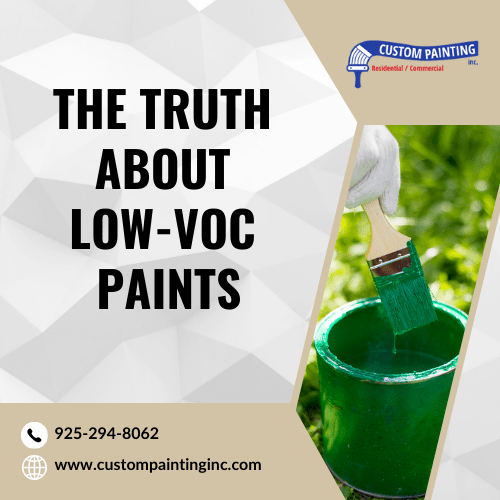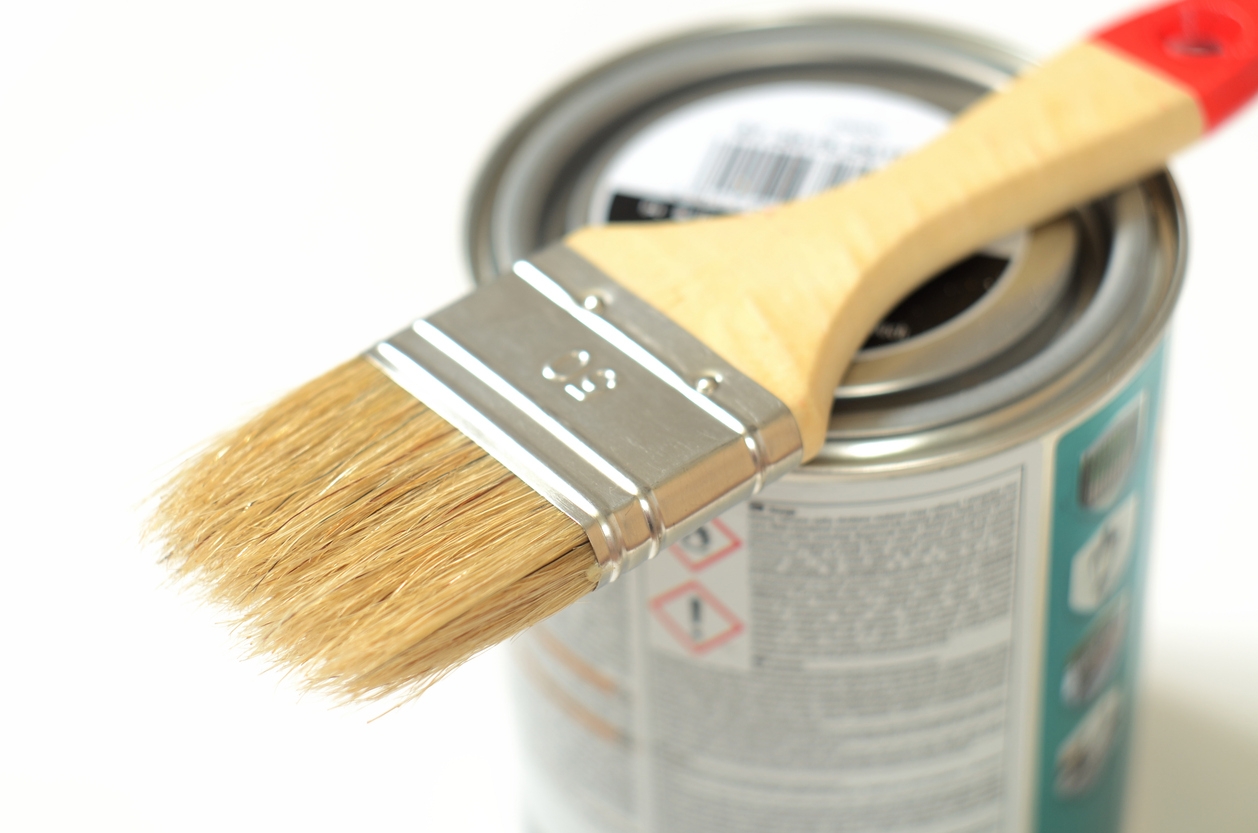Nowadays, people have become more aware of their health and the environment, and their actions reflect this increasing awareness. These actions include using low-VOC paints for their homes and commercial properties.
This article explores VOCs, detailing their environmental and health implications and highlighting their growing popularity due to consumers’ increased awareness of their benefits. It also discusses how these paints contribute to indoor air quality and sustainable living practices and the myths surrounding these paints (and the truth behind these myths).
What are VOCs?
VOCs are volatile organic compounds, chemicals that evaporate into the air at room temperature. In paints, VOCs are used as solvents to keep the paint in liquid form and aid in application. They contribute to paint’s drying and curing process but can pose health and environmental concerns due to their release into the atmosphere.
Health impacts:
- Respiratory issues: VOCs can irritate the eyes, nose, and throat.
- Headaches and dizziness: Short-term exposure can lead to symptoms like headaches and dizziness.
- Nervous system effects: Some VOCs are linked to adverse neurological effects like memory impairment.
- Cancer risk: Long-term exposure to certain VOCs has been associated with increased cancer risk.
Environmental impacts:
- Air quality: VOCs contribute to the formation of ground-level ozone and smog.
- Ecosystem damage: They can harm plants and animals, especially in sensitive ecosystems.
- Global warming: Some VOCs are greenhouse gases, contributing to climate change.
- Water pollution: VOCs can contaminate groundwater and surface water.
Reducing VOC emissions is important for both human health and environmental protection.
Understanding low-VOC paints
Definition and Criteria for Low-VOC Paints
Low-VOC (Volatile Organic Compounds) paints are formulated to emit fewer harmful fumes than traditional paints. The criteria for these paints typically include:
- VOC content: Low-VOC paints must contain fewer VOCs, generally less than 50 grams per liter for flat finishes and 150 grams per liter for non-flat finishes, though exact numbers can vary.
- Health and environmental impact: Low-VOC paints can minimize air pollution and reduce health risks such as headaches, dizziness, and respiratory issues.
Regulatory standards and certifications
- EPA (Environmental Protection Agency) sets national standards for VOC emissions in paints.
- CARB (California Air Resources Board) implements stricter VOC regulations in California.
- Green Seal Certification requires low-VOC content and ensures the product meets stringent environmental standards.
- LEED (Leadership in Energy and Environmental Design) encourages using low-VOC paints in building projects to earn credits for green building certification.
Types of low-VOC paints
- Water-based paints use water as a solvent with naturally lower VOC levels.
- Latex paints are water-based paints popular for their durability and low VOC content.
- Acrylic paints are other water-based paint types known for their versatility and lower VOC emissions than oil-based paints.
These paints are favored for their reduced environmental impact and improved indoor air quality.
Benefits of low-VOC paints
Low-VOC (Volatile Organic Compounds) paints offer several benefits:
- Health benefits: They reduce indoor air pollution, leading to fewer respiratory issues and improved overall air quality, making them safer for occupants.
- Environmental benefits: They emit fewer pollutants, contributing to lower emissions and being better for the ozone layer and overall ecological health.
- Practical benefits: They produce less odor, making painting more pleasant, and often have quicker drying times, allowing for faster project completion.
Limitations and considerations
Low-VOC (volatile organic compounds) paints are an eco-friendlier option compared to traditional paints, but they come with some limitations and considerations:
1. Performance:
- Durability: Low-VOC paints generally offer good durability. However, they may not be as robust as traditional high-VOC paints in certain harsh conditions.
- Coverage: Coverage can be slightly less effective, sometimes requiring additional coats to achieve the same finish as traditional paints.
2. Cost differences:
- Higher cost: Low-VOC paints are often more expensive than traditional paints due to the higher cost of producing environmentally friendly formulations.
3. Availability and variety:
- Color and finish options: While the availability of colors and finishes in low-VOC paints has improved significantly, there might still be fewer options than traditional paints.
How to choose the right low-VOC paint
Choosing the right low-VOC (volatile organic compounds) paint is essential for maintaining indoor air quality and ensuring a healthier living environment. This guide below will help you decide better:
Reading labels and understanding certifications
- Labels: Check the paint label for VOC content information. Low-VOC paints usually have less than 50 grams of VOCs per liter.
- Certifications: Look for certifications such as GreenGuard, Green Seal, and LEED (Leadership in Energy and Environmental Design) that ensure the paint meets stringent environmental and health standards.
- Ingredients: Review the ingredient list for harmful chemicals like formaldehyde, benzene, and toluene, which should be minimal or absent in low-VOC paints.
Factors to consider
- Room type: Consider the function of the room. For instance, bedrooms and nurseries benefit from the lowest VOC content due to prolonged occupancy.
- Usage: High-traffic areas or rooms that require frequent cleaning might need more durable, scrub-resistant paint.
- Ventilation: Ensure good ventilation during and after painting to help dissipate any residual VOCs. Rooms with poor ventilation may need extra attention when choosing ultra-low or zero-VOC paints.
Recommendations for top brands and products
- Benjamin Moore Natura: This zero-VOC paint is known for its excellent coverage and wide range of colors.
- Sherwin-Williams Harmony: A zero-VOC option that also helps reduce indoor odors.
- Behr Premium Plus: An affordable low-VOC option with good coverage and durability.
- ECOS Paints: Offers a wide range of zero-VOC paints that are free from harsh chemicals and safe for sensitive environments.
- Farrow & Ball: Known for its eco-friendly, low-VOC formulations and high-quality finish.
By carefully reading labels, considering the specific needs of each room, and opting for reputable brands, you can choose a low-VOC paint that ensures a healthier and more environmentally friendly living space.
Application tips for low-VOC paint
Preparing the surface
- Clean the surface: Ensure the surface is free of dust, dirt, grease, and mildew. Use a mild detergent and water to clean it.
- Repair and sand: Fill in any holes or cracks with spackle or filler. Sand the surface to create a smooth, even base for painting.
- Priming: Apply a suitable primer if the surface requires it, such as on bare wood, metal, or previously unpainted surfaces.
Proper ventilation during and after painting
- During painting: Open windows and doors to ensure adequate airflow. Use fans to increase air circulation and to help disperse fumes.
- After painting: Continue ventilating the area for at least 48-72 hours after paint application. Keep windows open and use fans to speed up the drying and ensure fumes dissipate.
Tools and techniques for best results
- Quality brushes and rollers: Use high-quality brushes for cutting in the edges and corners. Choose rollers for painting larger surfaces to ensure an even application.
- Stir the paint: Thoroughly mix the paint before application to ensure consistency.
- Thin coats: Apply the paint in thin, even coats. Multiple thin coats provide better coverage and a smoother finish than a single thick coat.
- Technique: Use long, even strokes and maintain a wet edge to avoid lap marks. Work in small sections to ensure even coverage.
Following these guidelines can help you achieve a professional-looking finish with low-VOC paint while maintaining a healthier indoor environment.
Common myths about low-VOC paints
Misconception 1: All low-VOC paints are the same
- Fact: Not all low-VOC paints are created equal. The term “low-VOC” refers to the amount of volatile organic compounds, but there is variation in the actual VOC content among different brands and products. It’s essential to check specific VOC levels and certifications.
Misconception 2: Low-VOC paints are not as effective as traditional paints
- Fact: Modern low-VOC paints can match or even surpass the performance of conventional paints in terms of durability, coverage, and color options. Advances in paint technology have significantly improved the quality of low-VOC options.
Misconception 3: Low-VOC paints are odorless
- Fact: While low-VOC paints typically have less odor than traditional paints, they are not entirely odorless. The reduced VOC content does lessen the intensity and duration of the smell.
Misconception 4: Low-VOC paints are more expensive
- Fact: While some low-VOC paints may be priced higher, the cost difference is often minimal. Additionally, considering the health and environmental benefits, they can be cost-effective in the long run.
Misconception 5: Low-VOC paints do not contribute to indoor air quality improvement
- Fact: Low-VOC paints significantly reduce the emission of harmful chemicals into the air, thereby improving indoor air quality and contributing to a healthier living environment.
Conclusion
Choosing low-VOC paints is crucial for a healthier home and environment as they reduce exposure to harmful chemicals, improve indoor air quality, and lower environmental impact. Make an informed decision when considering which paint to purchase for the long-term health benefits and environmental impact.
For best results, contact our team from Custom Painting, Inc., who can provide expert advice and high-quality applications. Call us at 925-686-0903 or message us on our online contact form for a free consultation and estimate.




